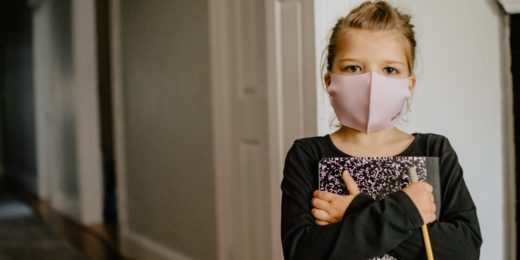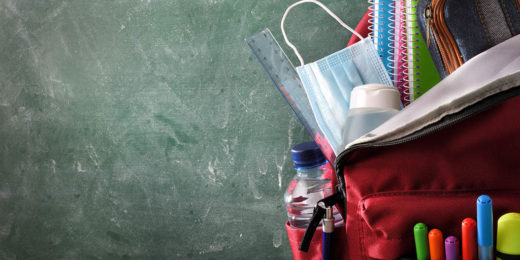More than 50 million American children have returned to in-classroom learning after more than a year stuck at home because of the pandemic. And that means millions of parents are crossing their fingers, hoping their little ones will stay safe in school and not become infected.
Even as cases caused by the Delta variant seem to be dipping, schools are still scrambling to improve ventilation and requiring students and staffs to wear masks and be vaccinated.
In this STAT opinion piece, Stanford Medicine professor of health policy Joshua Salomon, PhD, writing with Alyssa Bilinski from Brown University School of Public Health, argues that data from routine COVID-19 contact tracing and testing for asymptomatic cases among students and teachers could help schools remain open.
As they write in their STAT piece:
Data suggest that safe reopening is possible: with significant mitigation, COVID-19 transmission in the United Kingdom, Australia, and U.S. summer schools remained low even in the presence of the Delta variant. Nevertheless, transmission has been reported among masked children at camp and students with only brief contact, and some U.S. schools have already experienced large outbreaks, triggering closures. The question is: How can schools determine which measures are needed, now and throughout the year?"
With high-quality mitigation measures -- such as masking and testing -- in place, Salomon believes transmission may remain low even if infected teachers and students are in school. But they argue that strategic use of testing can be "both brakes and headlights," Salomon said in the article.
Asymptomatic testing allows educators to accurately estimate how many students or staff infected with SARS-CoV-2 arrive at school. And by testing contacts of infected individuals, schools can measure how much viral spread follows these introductions. Having information about both can make the difference between acting quickly enough to arrest outbreaks and being forced to close unexpectedly.
... Tracking prevalence allows a school to react swiftly to changes in the number of infected people who enter it. When these numbers rise, enhanced measures like strict cohorting of students within small-class groups or using higher-quality masks may be needed to reduce exposures and prevent outbreaks.
The article also mentions that contact tracing can help us better understand transmission in schools. Upon identifying positive COVID-19 cases, the school can provide testing to all contacts of ill individuals.
This can reduce the disruption associated with quarantines. In a "test-to-stay" strategy, for example, as implemented in Utah and the United Kingdom, and planned in Massachusetts, exposed contacts can stay in school provided they use regular rapid tests and isolate only if positive.
The two health policy researchers note legitimate concerns about the costs and feasibility of widespread COVID-19 testing in schools. But they also point out that the Biden administration has allocated $10 billion in funding for school testing programs, and that there are a growing number of examples of effective testing programs implemented by states the U.S. and other countries.
The choices that schools make are now more consequential than ever, as leaders aim for a full return to uninterrupted in-person schooling. And, despite some arguments to the contrary, avoiding large-scale outbreaks in schools is important for several reasons. First, even though COVID-19 is mild in most children, some children and families are at high risk for complications, and with the Delta variant, schools may amplify community transmission, especially in minority and vulnerable communities. Second, scientists are still studying whether Delta might lead to more severe outcomes in children than previous variants. Third, in the coming weeks and months, vaccination for children under 12, and further uptake among adolescents, will likely help defang the virus in these groups, making it meaningful to avoid outbreaks now.
Meanwhile, the authors note, school interruptions harm children through their effects on learning, loss of peer interactions and breaks in delivery of social services.
"Surveillance testing, then, gives school leaders the ability to strike a comfortable risk balance, adapt plans as needed, and provide reliable information to parents and educators making decisions for children and families," the article said.
Photo by Jenifoto






